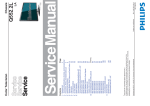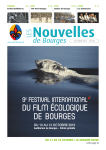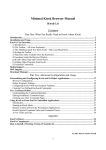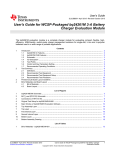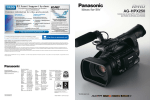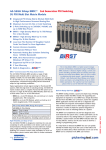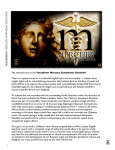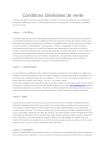Download Spaceshaper: a user's guide
Transcript
Spaceshaper A user’s guide Published in 2007 by the Commission for Architecture and the Built Environment. Graphic design by Draught Associates. Front cover image © Elizabeth Hoehnke All rights reserved. No part of this publication may be reproduced, stored in a retrieval system, copied or transmitted without the prior written consent of the publisher except that the material may be photocopied for non-commercial purposes without permission from the publisher. This document is available in alternative formats on request from the publisher. CABE is the government’s advisor on architecture, urban design and public space. As a public body, we encourage policymakers to create places that work for people. We help local planners apply national design policy and offer expert advice to developers and architects. We show public sector clients how to commission buildings that meet the needs of their users. And we seek to inspire the public to demand more from their buildings and spaces. Advising, influencing and inspiring, we work to create well-designed, welcoming places. CABE Space is a specialist unit within CABE that aims to bring excellence to the design, management and maintenance of parks and public space in our towns and cities. CABE 1 Kemble Street London WC2B 4AN T 020 7070 6700 F 020 7070 6777 E [email protected] www.cabe.org.uk Contents Introduction 4 Why measure quality? 5 How does it work? 6 How does Spaceshaper show the results? 7 How to plan your Spaceshaper workshop 8 Example agendas 11 Case studies Station Square, Milton Keynes Fairy Dell, Middlesbrough Lenton Recreation Ground, Nottingham Tunnel Woods, South Derbyshire Langdon Hills, Essex 13 14 15 16 17 Questions and answers 18 Checklist 20 Introduction ‘This government believes profoundly that the state of the local environment affects and reflects the well-being of the people living there. Whether it is the town centre, local park or the street on which we live, it is important that they add to the quality of life and that they are safe and attractive spaces’ Are you interested in improving the local spaces – the parks, streets or market squares - in your neighbourhood? If so, the Spaceshaper toolkit could be for you. Department for Communities and Local Government, How to create quality parks and open spaces guide, 2006 The Spaceshaper process Spaceshaper is a practical toolkit for use by anyone – whether a local community activist or a professional – to measure the quality of a public space before investing time and money in improving it. The toolkit works by capturing the perceptions of both the professionals involved in running a space and the people that use it. The results are discussed during facilitated workshops which aim to debate issues of design quality and build a better understanding about how the space works for the different stakeholders. The toolkit aims to be positive and raise aspirations, encouraging people to demand more from their local spaces. 1. 1. People fill in the questionnaire, with a facilitator 2. 4. 2. Information upload 3. D iscussion of findings 3. 4. M ore people can join the process over time. © Stefan Kruczkowski / Nottingham City Council The government believes that everyone should have access to good quality space close to where they live. Through the local government white paper, Strong and prosperous communities, it wants to enable local residents to take responsibility for the environment around their homes where they want to. It wants to see continually higher standards of management, increasing public satisfaction and engaging communities especially in poorly performing areas. Furthermore, it wants to foster community cohesion through greater resident participation in decision making and an enhanced role for community groups. The new planning policy statement (PPS3) on housing requires local planning authorities to develop a shared vision with their local communities creating places, streets and spaces which meet their needs, are attractive, have their own distinctive identity and positively improve local character. The policy context supports Spaceshaper by: - placing local government as a strategic leader and place shaper - requiring stronger and simpler arrangements for involving local people - calling for strong local leadership to shape place where we live. Why measure quality? ‘G ood design is about creating a space that functions well, both now and in the future. It should also be attractive, providing an inspirational and special space for people. If not designed well, poorly defined spaces will be created that may cause conflict between different activities and users, such as younger and older people. If spaces lack character and identity people will not want to use them.’ Measuring quality means involving a variety of interested people to define how well a space works. Through this process you can learn about the requirements of different groups of people to understand if their needs are being met. It will identify both good and bad characteristics and stimulate new ideas for improvements and how it could be managed. This process will help to develop good relations between the users and the people who run the space and will help you prioritise improvement. By measuring quality you are basing such decisions on good evidence. CABE Space, It’s our space: a guide for community groups, 2007 Spaceshaper is designed for people who have a willingness to bring about change for a space, since using the toolkit will encourage discussion on how the site can be improved. Spaceshaper is used for assessing existing sites but can also be used when planning new sites. The toolkit should be regarded as part of a process of consultation, not instead of it and not as a one-off activity. If you are applying for funding – or protecting existing budgets – you will be asked to provide evidence to demonstrate how any money spent on it would make a difference to local people. By measuring quality you will be able to track the changes before and after improvements. Spaceshaper compliments existing tools for measuring quality (see page 19). Specifically it can be used for: © Elizabeth Hoehnke – identifying the strengths and weaknesses of a space – establishing what is most important to people – comparing different people’s views – measuring how well the space meets everyone’s needs – stimulating new ideas for improvements – tracking changes in people’s views over time – bringing staff and users together in a structured way to discuss the space. How does it work? If you are interested in becoming a Spaceshaper facilitator, have a look at our website www.cabe.org.uk/spaceshaper for current training opportunities. A site visit is an integral part of the process. Often led by a local expert it allows the group to discuss the site and get to know each other. The visit prepares the participants to fill out the toolkit’s questionnaire which records individual perceptions of the space. These are captured by rating the site against 41 characteristics, grouped into the eight sections: – access: finding your way and getting about – use: what activities and opportunities the space has to offer – other people: how the space caters for different needs – maintenance: how clean and cared for the space is – environment: how safe and comfortable the space is – design and appearance: what the space looks like and what it’s made from – community: how important the space is to local people – you: how the space makes you feel. © Matthew Priestley Over 40 organisations helped develop the questionnaire, using a range of existing criteria such as the Green Flag Award, selecting and adapting those that are appropriate for both users and professionals who know that space well. The questionnaire has been tested by over 600 people across the country during two pilot phases. Spaceshaper is a workshop-based toolkit that has the flexibility to be adapted to local circumstances. Key to this process is a trained Spaceshaper facilitator, who will advise and run the workshop. You will need to invite people who are interested in the space, both users and professionals. Depending on the type of space you’re looking at, this could include elderly or young people, dog walkers, office workers and planners, the maintenance team and designers. See How to plan your workshop on page 8. During the workshop the facilitator inputs the data into the Spaceshaper software. The results are presented to the group provoking discussion and debate. The most important part of the whole process is the discussion between those with the knowledge of what it is like to use the space and those whose job it is to care for it. What you get from using the toolkit depends on your original objectives. Possible outcomes are: a better understanding of how the space works for different people, the role of the space in your neighbourhood, starting a debate on how the space can be improved and/or devising a way to track how people’s perceptions of the space change over time. How does Spaceshaper show the results? ‘I t appears to be the only method for evaluating the value and benefit of improvements to public space.’ ‘Spider’ diagrams are one of the ways in which the results of the questionnaires are shown during the workshops. Each of the eight lines that radiate from the centre point represents one of the eight sections from the questionnaire (see previous page). On each axis, a point has been marked. The more positive people’s responses are towards the space, the further out the point sits on the line. All the points have been joined up and the inside of the shape coloured in. The larger the shape, the better the perception of the site. Anthony Bailey, London Borough of Islington. Participant of the pilot phase. Access Use You Community Other people Design and appearance Maintenance Environment ‘The session provided a chance for groups with diverse views to come together and talk about their different needs in a positive way.’ The diagrams are used to help initiate the debate and discussion between the workshop participants. This example shows that the group thought this was a poor site. Points that lie within the dotted mid line indicate poor perception of a site, points sitting outside the dotted line a positive perception. For this example, perceptions of access, environment and community were relatively better. One example of how the results can be shown is to compare responses between different groups. For example, those who use the space against those who work for the space, with interesting results: Geoffrey Sinclair, The Woodland Trust. Participant in the pilot phase. Access Access Use You Community Other people Design and appearance Use You Maintenance Community Other people Design and appearance Maintenance Environment Environment Perception of users Perception of managers Both groups see access and environment as relative strengths, but there are clear differences in how they perceive the space. Other options could include comparisons between young and older people, or those who use the space every day and those who don’t. Other information, such as likes and dislikes and priorities can also be used by the facilitator to initiate discussions. How to plan your Spaceshaper workshop This section suggests how you might plan and deliver your workshop. This will help you to identify what resources you will need. Be prepared to allocate sufficient time to prepare, manage and follow up. This will have a direct impact on the success of your workshop and quality of the results. Other factors to take into account when calculating your budget include: venue, catering, transport, materials, equipment and promotion. To get started you will need to send brief details of your project to CABE Space. Please request a Spaceshaper project form from CABE Space by either emailing [email protected] or by calling 020 7070 6700. We will ask for basic details such as the name of your site, appropriate size, who manages it and what your project is about. 2. Select your facilitator You will need to employ a facilitator to help you use the toolkit. He or she will run your Spaceshaper workshop on your behalf, help your group fill in the questionnaire, explain the results, manage the discussion and help you agree a forward plan. How much of the facilitator’s time you use is up to you, but bear in mind you will need to pay for their time and expenses. Their involvement can range from advising on the agenda, invite list and managing the day, to organising the entire event and follow up. 3. Define your objectives You will need to be very clear about what you want to achieve from your Spaceshaper workshop. How does your workshop fit into the wider project? What information do you already have from previous consultations, reports or plans? How will your Spaceshaper workshop build on this and what other information will you need to collate through other methods? What information do you need from the workshop and what are you going to do with it once you have it? Your facilitator can help you clarify this. ©Mark Ellis Ashley Bingham / ICD Ltd 1. Getting started 4. Put together your invitation list It is important that the views of children and young people are heard. CABE Space is developing a version of the tool specifically for children and young people, to make sure that their opinions are counted. Contact us at [email protected] Who should you invite? Take a look at the list below. Not everyone may be able to come to your first workshop but you can continue to build on the information collected by the questionnaires over time. A Spaceshaper workshop is not about a huge audience, but about constructive debate and discussion between stakeholders. Workshops should be for between eight to 18 people and a balance of both users and professionals. Depending on what kind of space you have, this might include: Access groups Arts groups Casual users Commuters Disabled people Elderly people’s groups Environment groups Faith groups Families Local businesses Local office workers Local residents School children Shoppers Sports groups Sure Start participants Teenagers Tourists Volunteers Vulnerable groups Youth groups Architects Councillors Landscape architects Maintenance teams Managers Planners Police Rangers Wardens. Taking the time to engage with a diverse representative group of people interested in the space is essential to gaining a true reflection of the people who use the space. Working in partnership will help build relations with hard to reach groups. 5. Submit your project plan Your facilitator will need to submit your plan to CABE Space for approval. This will need to include: –Facilitator details – Workshop objectives – Provisional invite list –Approximate workshop date. Your project details will then be uploaded onto the software for the facilitator to access during the workshop. 6. Set the date, time and venue Points to consider: Use a venue in or near the space. Make sure that people will be able to get into your venue; is it wheelchair accessible, for example? Most public spaces are busier in summer. It is easier to get people interested at this time. Avoid workshops during the coldest winter months if possible. If you hold the workshop on a weekday, you will not attract people who work in a nine to five job but you will catch elderly people, parents and carers. Weekends are easier for most people although professionals are less likely to be able to attend outside normal working hours. There is no ideal time and you may want to consider more than one workshop, perhaps one during daytime and another in the evening. Send the invitation out in good time (allow three weeks) before the event. It should include the following information: – Date, time and location –The aim of the workshop - make sure you are clear about why you are inviting people so that their expectations are managed – Tell people if refreshments are included –Ask people to contact you if they have particular needs. This could include accessibility or dietary requirements –Let people know what they are going to be expected to do. For example, to fill in a questionnaire (so they can bring their spectacles), and walk around the site, so they can bring suitable clothing – Your contact details for any queries –An RSVP slip, so that you will know how many people to expect. See example workshop agendas on page 11. 7. Resources on the day Agree with your facilitator who is responsible for materials which might include a local map, flip charts, pens, post-it notes, a data projector and the Spaceshaper questionnaires. CABE can provide translated versions of the questionnaire. Please contact us at least a month in advance if you require a translation. When planning your workshop, you might want to arrange visits to other sites first. For good parks near you, take a look at the Green Flag Award website on www.greenflagaward.org. The Green Flag Award is the national standard for parks and green spaces. CABE will be adding good examples of streets to its website in 2007. After the workshop the facilitator will write up the results, discussion and next steps in a report. You should agree with the participants how they want to be kept up to date with progress and who else might want to be included. It is vital that workshops are followed up and the network of participants and others is maintained. © Matthew Priestley 8. Report 10 Example agendas Your Spaceshaper facilitator will design and lead the workshop. The format and how long this will take depends on your objectives and the size of the site and of the group. Basic Welcome and introductions 10 minutes Setting the scene and workshop objectives 10 minutes Introducing the questionnaire 10 minutes Walk about the site 1 hour Completing the questionnaire 20 minutes Lunch and entering questionnaire results 1 hour Presenting the results and discussion 1 hour Close: thanks and next steps 10 minutes Total Appreciating current value and protecting this in the future Welcome and introductions This agenda was designed around the need to collectively understand the unique value of a large site in an area that will undergo significant change in the future. 11 4 hours 15 minutes Introduction to workshop agenda Planet earth experience – participants are asked to describe what one single experience they would use to describe why they value the space 45 minutes Introduction to the toolkit 10 minutes Introduction to the wider context of the site and future pressures on it 10 minutes Site visit 1 hour Lunch and data entry 20 minutes Identification of key issues for the future 1 hour Discussion of results 1 hour Next steps and close 10 minutes Total 10 minutes 5 hours This agenda was developed to encourage participants to think of the space from other people’s point of view. Secret santa Welcome and program for the day 10 minutes Introductions 5 minutes Your views: individuals identify their own interest group and 10 minutes write it down on a post-it note which is collected by the facilitator Introduction to toolkit 10 minutes Site visit 1 hour Completion of questionnaire and their own wish list for the site 20 minutes Lunch and data entry: the facilitator allocates each participant 1 hour with a new interest group over lunch. Each person is asked to come up with a secret santa gift (an improvement in the space) that their interest group would appreciate as a Christmas present. This is written on a piece of paper and folded up for later. Spaceshaper results are discussed both in terms of the space now and what the aspirations are for the future 20 minutes Secret santa gifts ‘unwrapped’ participants consider their gifts and the list they have just created 20 minutes The group prioritise the final list of improvements 20 minutes Close 5 minutes 12 Total 4 hours Case studies How Spaceshaper has been used elsewhere – and the lessons you could learn from others’ experience. Case study 1 Station Square, Milton Keynes Residents, shoppers and local businesses talk to the Milton Keynes Partnership (MKP) to identify short-term improvements. Station Square is one of Milton Keynes’ most important urban spaces. Opened in 1982, the square serves as an arrivals and departures gateway and is a strategic transport interchange. The square was designed to be large, bright and airy, with mirror-clad buildings around three sides and ample space for additional developments to connect it to the commercial district. Ad hoc interventions over time have taken their toll and the square’s appearance and condition has sadly deteriorated. ?Xm\PfliJXp Around five million people pass through Station Square every year and, with increasing urban growth, this number is due to rise. The square has been identified by the MKP-run Central Milton Keynes Board as a key public realm improvement project in its long-term development plan that will eventually close the gap between the square and the heart of the city centre. :DBJkXk`feJhlXi\$Jlim\p Image © Glenn Howells Architects G_fkf^iXg_Yp>c\ee?fn\ccj8iZ_`k\Zkj 8IFLE;,D@CC@FEG<FGC<8P<8I8I<G8JJ@E>K?IFL>?JK8K@FEJHL8I<% K?@J@JFLIFGGFIKLE@KPKF:I<8K<8GC8:<KF<EAFP8E;9<GIFL;F= N?8K6 JkXk`feJhlXi\Y\cfe^jkf`kj lj\ijÆn\e\\[kfbefn_fn pfl]\\cXYflk`k1 @j`kjX]\6 @j`kXjgXZ\pflc`b\kflj\6 8ep^ff[`[\Xjk_XkZflc[ dXb\`kY\kk\i6 N?P6 K_\k`d\`ji`^_kkfcffbXk nXpjkf`dgifm\JkXk`feJhlXi\1 kfdXb\`kdfi\n\cZfd`e^Xe[ lj\XYc\`ek_\j_fikk\id#Xe[ kfZi\Xk\Xm`j`fe]fik_\]lkli\% ?FN6 G`ZblgXhl\jk`feeX`i\Xk:DB `e]fidXk`fegf`ekjXkD`[[c\kfe ?XccXe[D`[jldd\iGcXZ\ X[aXZ\ek;\Y\e_Xdj #Xe[ Xkk_\JkXk`fe2fi[`i\Zkcp ]ifdflin\Yj`k\Xk nnn%dbn\Y%Zf%lb&]lkli\Zdb ]ifdAXelXip0k_kf).k_#)''- Gc\Xj\_\cgljYpZfdgc\k`e^k_\j_fikhl\jk`feeX`i\% :fekXZkljXk1:DBK\Xd#D`ckfeB\pe\jGXike\ij_`g :\ekiXc9lj`e\jj<oZ_Xe^\@@#+(+Æ+)/D`[jldd\i9flc\mXi[ :\ekiXcD`ckfeB\pe\j#DB0)<8 K\c1'(0'/*,*0+'<dX`c1]lkli\Zdb7\e^c`j_gXike\ij_`gj%Zf%lb Milton Keynes Partnership invited local people to have their say WWWMKWEBCOUKFUTURECMK The Central Milton Keynes team wanted to start an early process of consultation to find out what people thought of the space and to explore the potential of some short-term improvements. A series of four Spaceshaper workshops, held at different times of the day and week was designed to involve a range of individual users and stakeholders. Workshops engaged 33 representatives from stakeholder groups and organisations, providing an opportunity for different users to compare their own perceptions with others’. Common themes emerged through the workshop process. Contributors agreed that the design of the square was an architectural tour de force of its time, but had since become a bleak and barren space. Participants noted that the square’s function as a gateway to the city was undermined by the absence of clear routes through the square, interesting features, appropriate signage and connection with the city centre. The overall process produced a positive result – the compilation of a list of short-term measures to improve the square’s function and appearance as an important gateway to the city. The Milton Keynes Partnership is set to incorporate the findings into future improvement plans for the square. 13 Case study 2 Fairy Dell, Middlesbrough School children and a local friends group explain why they value their local woodland and describe their fears and aspirations for the planned improvements. Fairy Dell is a haven for wildlife, with steeply wooded banks, a stream, lakes, woodland and grassy glades. It is very important to the local community as a place of leisure, recreation and fresh air and also for the pupils of the nearby Saint Augustine’s RC primary school as a living, green classroom. However, it suffers from long-term neglect and anti-social behaviour. The locals regard the footpaths as muddy and overgrown. A successful local campaign won the community £50,000 from the Big Lottery Fund to restore Fairy Dell. Middlesbrough council match-funded the investment and was keen to measure the change in people’s perceptions before and after the improvements. The local Wildspace! officer wanted to involve the local primary school. A workshop was designed around a half day in the nearby school with a year six class. Questionnaires were completed on computers, allowing the children to create their own spider diagrams instantly and reflect their individual perceptions of Fairy Dell. © John’s Studio Pupils at Saint Augustine’s RC primary school inputted their own questionnaires; this resulted in individual spider diagrams reflecting their views on the day The children said they valued the space for the greenery and wildlife and appreciated its important role in the community. However, they were disappointed that the Dell was not used as often as it should be, was poorly maintained and that there were no staff to control anti-social behaviour. In the evening, the Friends of Fairy Dell volunteer group attended a second workshop. The results showed that people felt that Fairy Dell’s natural beauty, peace and tranquillity were its key assets. The questionnaires stimulated discussion of the issues and actions to take forward. Increased political support was needed, as was continued communication with local residents on the progress of improvements. The group recognised that a balance was needed between the importance of conserving the site and the value of encouraging more visitors. It also recognised the value of educational work in bringing new families to Fairy Dell. It agreed that success of the project was dependant on improved standards of maintenance in the long term. The exercise presented a snapshot of two groups’ perceptions for future comparisons. It contributed to the environmental education programme and helped widen the discussion beyond just litter and anti-social behaviour. 14 Lenton Recreation Ground, Nottingham Case study 3 City council seeks out local people to see what they really think of their award-winning park. Lenton Recreation Ground is a popular neighbourhood park in Nottingham. This compact place offers two bowling greens, playground, basketball area, playing field and a full-time parkie. The Green Flag Award is the national standard for parks and green spaces in England and Wales. Awards are given on an annual basis and winners must apply each year. To find your nearest Green Flag Award park, visit www.greenflagaward.org.uk The park has met the national standard for parks and green spaces, winning Green Flag Awards in 2005 and 2006. The council wanted to find out whether the park lived up to local expectations and compare findings against the Green Flag Award judges’ feedback. Careful consideration by the council and the local partnership forum indentified all the groups that use the park, which led to over 60 people assessing the site using the Spaceshaper questionnaire. Representative users included young people, youth service workers, schoolchildren, university students, members of an over-50s health group, local residents, dog walkers, casual users and a group of vulnerable adults and teenagers. Front-line staff, maintenance managers, community protection officers and councillors were also surveyed. © S.Kruczkowski / Nottingham City Council The Green Flag Award scheme Views from the wider community, including members of an over-50’s health group through to vulnerable teenagers, have demonstrated how much they valued their local park The results were presented and discussed at a park consultation group meeting managed by the Dunkirk and Lenton Partnership Forum. The results demonstrated how much the community valued the park, reflecting the recent investment and its Green Flag Award. Issues of concern were discussed with the council and actions taken forward for both the partnership forum and the council. The city council reported that it would be adopting the toolkit as a means of assessment. ‘The toolkit is a valuable resource to help us measure the quality of the public realm,’ said the council’s Stefan Kruczkowski. ‘It offers us an opportunity to take us beyond a compartmentalised view of the components that make up public realm and see these places as a whole rather than disparate parts, in turn helping us to transform the city’s neighbourhoods. We are especially keen to use it in places where we are planning improvements such as the Meadows and Victoria Embankment, to help develop proposals with the community and determine the impact of investment by assessing quality both before and after investment.’ 15 Case study 4 Tunnel Woods, South Derbyshire Local people use the toolkit to help create their vision for a new community woodland. In 2005 the Forestry Commission bought 22 hectares of agricultural land with the aim of planting it as a community woodland with the National Forest. ‘Our objective is to establish new woodland in keeping with the surrounding area, through consultation with local people,’ Susan Taylor from the Forestry Commission, now responsible for its management, explained ‘This new tool gives an opportunity for people to meet and discuss with those who make decisions.’ The toolkit was used to look at this new site during a workshop bringing together an initial group of stakeholders to explore what they would want to see in their woodland and develop a way of tracking the progress made over time. A small group attended an inspiring presentation, illustrating local and regional examples of other community woodlands and the activities and facilities they offered. The group was asked to think about Tunnel Woods in two, five and 15 years and to say what uses, activities and experiences they and other community groups would like to see. They were then asked to choose from a list of 41 criteria, taken from the toolkit’s questionnaire, which reflected their priorities or aspirations for the site. These indicators would later be used to track progress of the wood over time. As a result of the exercise, the Forestry Commission began engaging the community in ideas for the future development of Tunnel Woods. It introduced new concepts of what the woodland could do for the community and stressed the importance of making contact with others caring for neighbouring woods. The group went on to identify specific key stakeholders to bring into the project and proposed the formation of a strategic partnership for action between the county and local authority, police, Railtrack and the parish council. © William Hawkins Access is not just about clear signage; it’s also about site information being easily accessible. At Tunnel Woods, efforts will be made to ensure the wider community are kept up to date with the site’s progress 16 Case study 5 Langdon Hills, Essex Regular users and managers come together to define the special character of the Hills and discuss future pressures. ‘B ut what makes a place a place? A place is a location with a meaning. Take a raw location or map reference or postcode and add meaning – associations, ideas, history, a sense of identity – and you have a place.’ CABE, New things happen: a guide to the future of the Thames Gateway, 2006 One Tree Hill, Westley Heights and Dunton Plotlands make up three areas known locally as Langdon Hills. The plotlands, 460 acres, represents Essex Wildlife Trust’s largest inland nature reserve. With its meadows, ancient woodlands, ponds, plantations and wild scrub, it forms a rich mosaic of valuable habitats. Given the ambitious regeneration plans for the area, the Thames Gateway South Essex Greengrid Partnership called a meeting with regular park users and representatives from the three managing organisations to discuss what makes the area special and how they might collaborate together in the future. At the workshop, the group was asked to express what each found remarkable about Langdon Hills and to define why they valued it so deeply. People who use it treasured the area for many reasons; such as its ‘historical richness, flower-rich meadows, inspiring wildlife’ and ‘the wide vistas of green space amid an urban setting.’ They also enjoyed the variety of amenities it offered, such as ‘walking dogs in the bluebells, sledging down the hills’ and ‘blackberrying on One Tree Hill.’ Sixteen participants made site visits to each of the three areas. Questionnaires were then completed to assess the quality of the site and identify strengths and weaknesses. They were also invited to consider five specific issues in context of the wider Thames Gateway regeneration project: access, education, local communities, managing the landscape setting and biodiversity versus urbanisation. Through workshop discussions, the identity and character of Langdon Hills was recognised by a variety of users and professionals 17 © Greengrid South Essex As a result of this structured opportunity, the group was able to present their ideas about how they could safeguard the special qualities of the hills for future generations and discuss improved joint working. Questions and answers Why is quality important? Good quality places are clean and well cared for. They are easy to get to and move about in. Good spaces can be used for a variety of activities, from energetic sports to simply being somewhere to relax in. This attracts people to use them and helps create a sense of safety. Good public spaces can also help build a sense of community, creating neighbourhoods and town centres with real character that make people happy and healthy and encourage them to visit. Badly designed and managed spaces, on the other hand, can quickly turn into neglected eyesores attracting anti-social behaviour and bringing down the local area. How is Spaceshaper toolkit different from other tools? There are a number of tools available to measure quality of public space. Spaceshaper was developed to complement these, but is unique because: –It is designed to be used in all types of public space - not just parks and green spaces –It is subjective rather than objective: the key part of the process is the dialogue between users and professionals, not a final score that can be used to compare with other spaces –It uses structured criteria like the Green Flag Award but has been specifically developed for users as well as professionals –The criteria are spread across a broad range of issues, not focusing on management, which is the role of the Green Flag Award, or taking the market research survey approach such as GreenSTAT (www.greenstat.org.uk) –Questionnaire data is stored so that changes in the perception can be easily measured over time. This is to encourage managers to maintain dialogue with users over a long period of time and continually build up the data, bringing in new groups and individuals. Why do I need a special facilitator? The facilitator has proved an essential part of the process. He or she will take your group through the workshop, explaining the questionnaire and using the software to show and interpret the results. He or she is skilled at putting everyone at ease and making sure the discussion is productive and not dominated by a single issue. The facilitator can offer independent advice about your space and bring in experience from other spaces. Can I adapt the questionnaire for my site? No. The process has been designed so that each space is assessed according to a standard set of criteria. This encourages people to think about a whole range of issues of quality, not just the obvious ones like litter and dog mess, although these are important. However, when completing the questionnaires on the day participants can choose to tick not relevant or don’t know against any of the questions. Is it a design quality indicator? Spaceshaper is part of the design quality indicator (DQI) family (see www.dqi. org.uk). The DQI is a process for evaluating the design quality of buildings. It can be used by everyone involved in the development process to contribute to improving the quality of the built environment. The DQI is generic and can be used for any kind of building, as this toolkit can be used for any kind of outdoor space. 18 Can I compare results across different sites? Each time the toolkit is used, it is completed by a group of people unique to that space based on their own subjective opinions. Results are therefore not comparable between sites. In theory if the same group of people assessed a number of sites on the same day, comparisons could be made but this has not been tested. How is climate change reflected in the questionnaire? The role public space plays in dealing with the effects of climate change is substantial. Reducing air pollution, increasing biodiversity and encouraging people to walk and cycle more are just three examples of how the design, management and use of public space can help us deal with these issues. Where appropriate these issues have been incorporated into the questionnaire. Some more technical questions are asked separately of the person managing the space, which the facilitator will bring to the workshop as appropriate. How is inclusive design reflected in the questionnaire? Access and inclusive design involves ensuring public spaces can be enjoyed and used safely, easily and with dignity by all of us regardless of disability, age, gender, ethnicity or circumstance. If you would like to test whether your space can be enjoyed by all you will need to ensure that a range of people complete the questionnaire. Can I use the questionnaire without the facilitator or the software? No. The questionnaire has been designed to be completed with the assistance of a facilitator who can take participants through it and answer any queries. The Spaceshaper software enables the questionnaire data to be stored and presented in a number of different formats according to the needs of your workshop. Can I use the questionnaire with people who don’t know the space? The Spaceshaper questionnaire has been written for people who know the space, whether a regular visitor or a passer by. Those who don’t use the space are an important group to canvass as part of your wider project, but are likely to require a different set of questions. How much will it cost? This will vary from project to project, dependant on what elements of the process you need to pay for. These may include: venue, catering, transport, materials, equipment, organisation time, advertising and the Spaceshaper facilitators fee. Facilitators are independent of CABE Space and are employed directly by the organisation who wants to use Spaceshaper. They will have their own hourly or daily rates. Where can I find out more? Visit www.cabe.org.uk/spaceshaper, or contact Nicola Mathers at CABE Space on 020 7070 6700, email [email protected] 19 Register your interest in using Spaceshaper with CABE Space. Brief details of the project (no more than 200 words) should include the name of the site, approximate size, who manages it and what the project is about Employ a facilitator to help you use the toolkit. CABE Space will then release the list of facilitators to choose from. It is up to you and the facilitator to agree your working arrangement Gather information from previous consultations, reports and plans Put together an invitation list, try to include a wide range of people: Access groups Art groups Casual users Commuters Disabled people Elderly people’s groups Environment groups Faith groups Families Local businesses Local office workers Local residence School children Shoppers Sports groups Sure Start participants Teenagers Tourists Volunteers Vulnerable groups Youth groups Architects Councillors Landscape architects Maintenance teams Managers Planners Police Rangers Wardens. Submit your project plan to CABE Space, this will include: • site details • workshop objectives • approximate workshop date. Set the date, time and venue, ensuring its easily accessible to people and the space Send the invitation allowing three weeks before the event, with the following information: • date, time and location • the aim of the workshop • tell people if refreshments are included • ask people to contact you if they have particular needs • let people know what they are going to be expected to do • contact details for any queries • RSVP slip. Ensure there are adequate materials for the day; this may include a local map, flip charts, pens, post-it notes, laptop, a data projector and the Spaceshaper questionnaires Agree with participants if and how they would like to be kept up to date Write up the report, including results, discussion and next steps Keep people informed of progress! 20 Facilitator The following checklist outlines the key stages of a Spaceshaper workshop. Agree from the outset who, either you or the facilitator, has responsibility for each of these tasks. There may be some you wish to do together. Tick off each stage as they are completed: You Checklist Spaceshaper is a practical toolkit for use by anyone – whether a local community activist or a professional – to measure the quality of public space before investing time and money in improving it. This user’s guide from CABE Space explains how Spaceshaper works and outlines practical steps to plan your workshop. It shows how Spaceshaper has been used elsewhere and the lessons you can learn from others’ experience.





















